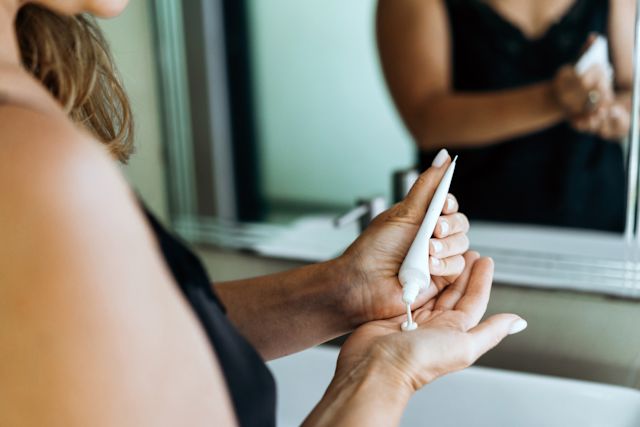Updated on May 27, 2025.
Psoriasis is a common skin condition. It typically causes patches of thickened, scaly, and itchy skin, often on the elbows, knees, back, and scalp. But psoriasis can appear anywhere on the body, including the genitals and the skin around the genitals.
As with other forms of psoriasis, genital psoriasis is an autoimmune disease. It is not an infection or a contagious illness, but a condition caused by a combination of genetics and environmental factors.
What is genital psoriasis?
Genital psoriasis is psoriasis located around any of the following areas:
- Pubis, or the area located just under your abdomen towards the front of your body
- Vulva
- Penis and scrotum
- Anus
- Creases between the groin and thighs
- Upper thighs
- The crease between the buttocks
Since psoriasis involves the outer layers of the skin and not the mucus membranes (except in rare cases), symptoms do not affect the inside the vagina or the urethra.
Symptoms of genital psoriasis are typically different than those of plaque psoriasis, the most common type of psoriasis. Instead, genital psoriasis most often appears as inverse psoriasis, which affects areas of the body where there are folds of skin. It causes smooth lesions that are brightly colored and many appear shiny. Sweat and skin rubbing against skin irritate these lesions and can worsen symptoms. Besides the genitals, other areas of the body commonly affected by inverse psoriasis are the underarms and the skin underneath the breasts.
Genital psoriasis can cause significant physical discomfort. Some commonly reported symptoms are itching, pain, discomfort, stinging, burning, and scaling of the skin. Some patients also experience cracks or fissures in the affected skin.
In addition to physical discomfort, genital psoriasis also can have a severe negative impact on a person’s quality of life and sexual health. In studies, people with psoriasis symptoms on the genitals score lower on quality-of-life questionnaires than patients with psoriasis on other areas of the body. Though it is not a contagious disease—and the factors that cause psoriasis are generally beyond a person’s control—symptoms may be embarrassing, have a stigma attached to them, and can be mistaken for sexually transmitted infections. Patients often report that the condition impairs their ability to have sex and enjoy sex, and many report that they avoid sexual relationships. Some also report that sexual activity can make symptoms worse.
It is important to remember, however, that multiple treatments are available to help control symptoms and improve quality of life.
How common is genital psoriasis?
If you have genital psoriasis, you are not alone. Studies estimate between 33 and 63 percent of people who have been diagnosed with psoriasis develop genital psoriasis at some point. Research has also shown that a significant number of people with genital psoriasis do not discuss their symptoms with their healthcare provider (HCP).
How is genital psoriasis treated?
The first step to treating genital psoriasis is speaking to a HCP. While discussing symptoms that affect the genitals may be emotionally stressful or challenging, it’s important to do, since genital psoriasis requires a different treatment approach than psoriasis on other areas of the body.
If you are already being treated for genital psoriasis and your treatment is not working, talk to your HCP about what other treatment options are available.
Commonly prescribed treatments for genital psoriasis include topical (skin) treatments and ultraviolet (UV) light therapy. Treatments that affect the whole body, such as DMARDs (disease-modifying antirheumatic drugs) and more targeted biologic drugs, may also be used in some cases.







